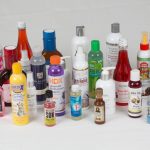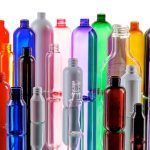Part 4. Plastic formulation
It is generally believed that plastics are inert to the environment with only physical changes producing micro and nano plastics1. However, it is known that they also chemically react with sun light. Sun light exposure converts plastics into oxygenated products. Dissolved organic carbon (DOC), polymers and gases are produced. For instance, Polyethylene (PE) commercial bags and PE films in ocean water are decomposed 3-80-fold relative to the dark leaching. PE bags produce more DOC than film when exposed to sun light (1.2-2 fold). Therefore, additives added to the bags influence its photo degradability. Among the additives (13-34 weight %), TiO2 (1-2 weight %) is present in commercial PE bags. This semiconductor2 in presence of UV light catalyzes the photooxidation of any organic material in contact. UV light excites an electron (e) from the de semiconductor valence band (VB) to its conduction band (CB). The e hole left in the VB is highly oxidant promoting its reduction by receiving an e from water or directly from the organic material. Water will then be oxidized producing radical hydroxide (OH.), one of the stronger oxidant agents. Continuous OH radical interaction with the organic material promotes its oxidation until mineralization (conversion into CO2 and water) occurs. In the oxidation process, some organic intermediates remain. Sometimes the solubility of these intermediates may increase the plastic inherent toxicity.
The degradation of the original plastic is then catalyzed by the semiconductor and the sun light. Isotopic carbon signature (13C and 14C %) on the plastic samples can determine the origin of the carbon material in the plastic and the DOC produced via photooxidation. For instance, it could be decided if they come from primarily fossil (petroleum feedstock) or modern carbon (additives). New technique as Fourier transform-cyclotron resonance-mass spectrometry (FT-ICR-MS) allows the isotopic signature determination and increases the plastic photoproducts measurements resolution. For instance, it has been found2 that the DOC produces from PE plastic bags increasingly reflects the 13C and 14C isotopic composition of petroleum feedstock.
1.- A. L. Andrady, Mar.Pollut. Bull. 62, (2011) 1596−1605.
2.- J. Schneider, M. Matsuoka‡, M.Takeuchi, J. Zhang, Y. Horiuchi‡, M. Anpo, D. W. Bahnemann Chem. Rev. 114, 19 ( 2014) 9919–9986
3.- A. N. Walsh, C. M. Reddy, S. F. Niles, A. M. McKenna, C. M. Hansel, C. P. Ward, Environ. Sci. Technol. 55, (2021), 12383−12392





